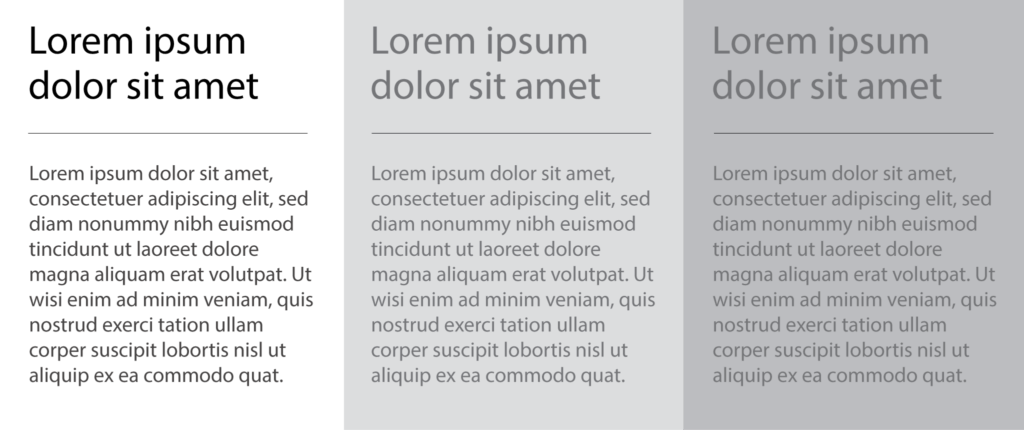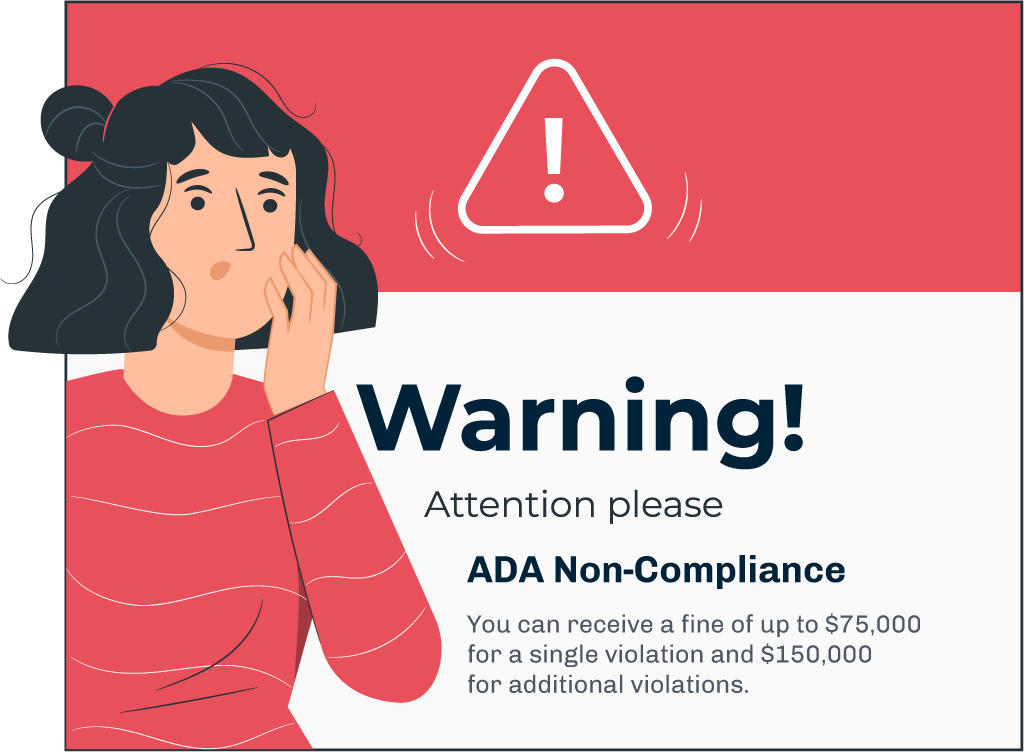Around 15% of the global population has some kind of disability, and many websites have barriers preventing people from using them.
Three-quarters of Americans with disabilities use the internet daily, so creating a website with features and functions that improve accessibility is crucial – especially for DTC and CPG companies.
An accessible website is more than just a moral issue; failing to cater to people with disabilities could result in legal action. Federal courts handled more than 2,500 website accessibility lawsuits in 2020, and law firms sent out thousands of demand letters to companies like yours.
In this guide, learn more about online accessibility, why you need to have an accessible website, and how you can work with your agency to create one.

What Is Web Accessibility?
The U.S. General Services Administration says accessibility “focuses on how a disabled person accesses or benefits from a site, system, or application.” That means you should design and develop websites and technologies so that everyone can use them.
Perhaps the most critical piece of legislation related to website accessibility in the United States is the Americans With Disabilities Act (ADA), which strives to end discrimination against people with differing abilities. The ADA dates back to the early 1990s — long before the internet became the force it is today. That means this legislation doesn’t address the complex issue of web accessibility, so courts have to decide whether ADA principles apply to specific websites.
Without explicit legislation for website accessibility, judges often use discretion when determining whether a website owner has violated the law. That means some organizations have received enormous penalties for relatively minor violations, underlying the importance of ADA-compliant websites. While making a website more accessible might require an upfront outlay, the costs often pale in comparison to the court-imposed fines that many organizations just can’t afford.
What Are Common Website Accessibility Issues?
There are various accessibility issues that people with disabilities experience when browsing the internet:
Low Contrast on Text
Low contrast on text makes it hard for people with vision-related disabilities to read your content.

Missing ALT Text
ALT text is a description of an image on your website. Screen readers, often used by people with vision problems, read the ALT text out loud.

Lack of Closed Captions or Audio Descriptions
People with vision and hearing issues rely on closed captions or audio descriptions to understand videos on your website.

Too Many Navigation Links
Too many navigation links can make it difficult for users to move around your website. Pay close attention to the user experience on your website and ensure internal links are helpful and accurate.
How Much Will ADA Non-Compliance Cost You?

While ADA doesn’t explicitly refer to website accessibility, the penalties for ADA non-compliance are crystal clear. You can receive a fine of up to $75,000 for a single violation and $150,000 for additional violations.
There are many famous examples of companies ending up in court for alleged ADA violations. In 2012, the National Association of the Deaf started a lawsuit against Netflix for not providing closed captioning on some of its content. In 2017, Nike got caught up in a lawsuit because two of its websites (Nike.com and Converse.com) were inaccessible to people with visual impairments.
Ultimately, it doesn’t matter if you own a large corporation like Netflix or a small online business. Not making your website accessible to everyone can result in legal action and costly fines.
Most companies who receive demand letters or end up in court for alleged website accessibility non-compliance violate Title III of the ADA, which prohibits discrimination against people with disabilities in “public accommodations,” such as stores, restaurants, and hotels. Many attorneys have successfully argued that websites fall into this category, resulting in excessive penalties for companies that failed to provide online features for disabled users.
What About WCAG?
Web Content Accessibility Guidelines (WCAG) are different from ADA but just as important. These guidelines — considered the leading international standard for accessibility on the internet — outline suggestions for making websites more user-friendly for people with disabilities. You can refer to these suggestions when redesigning your website.
WCAG is not a legal requirement for private companies, meaning you don’t have to follow these guidelines. However, incorporating WCAG principles into your web design will certainly improve accessibility for all users and prevent you from violating the ADA. (Note: From 2017, all federal agencies and their contractors must comply with WCAG principles by law.)
The most recent version of WCAG is WCAG 2.1 A/AA, which lists further technical specifications to make websites accessible. Published in 2018, the guidelines feature new suggestions for making mobile websites more user-friendly, as well as tips for improving the online experience for people with vision and cognitive impairments.

How to Improve Website Accessibility
Using WCAG as a guide, here are just some of the ways you can improve website accessibility:
- Provide text alternatives for video and audio content that serve the same purpose.
- Use audio descriptions or text transcripts for videos with audio.
- Present all web content in a meaningful order to improve readability.
- Don’t use web designs that rely solely on color.
- Don’t play audio automatically.
- Make web content accessible without the use of a keyboard.
- Allow users to navigate pages without the use of a keyboard.
- Allow users to pause, hide, or stop auto-updating content.
- Provide users with a way to skip repeated blocks of content.
- Use clear and helpful page titles.
- Identify input errors.
- Label web elements.
- Add captions to live video content.
- Make sure your website adapts to landscape and portrait views.
- The contrast ratio between text and the background of your website should be at least 4.5:1.
- Don’t use images of text.
- Suggest fixes when a user makes an error.
- Use sign language translations for prerecorded content.
- Use alternatives for live audio.
- Define unusual words and phrases.
- Define abbreviations.
Other Ways You Can Improve Website Accessibility

A WCAG audit is one of the best ways to determine your website’s accessibility credentials. We can help evaluate your website and see how well it adheres to the ADA and WCAG standards. After your audit, you can make the necessary changes to your website and meet the needs of people with disabilities.
Various tools let you check whether your online complies with accessibility standards. Here are some of the tools recommended by WCAG:
a11yTools for iOS
This WCAG checker app lets you take a screenshot of web pages on your phone and send images to developers who can suggest accessibility improvements.
Functional Accessibility Evaluator 2.0
The University of Illinois at Urbana-Champaign can check your website for WCAG requirements and provide a detailed report on its findings.
IBM Equal Access Accessibility Checker
This is an open-source browser extension for Chrome and Firefox that detects accessibility issues for web applications. The extension identifies the source of elements that might hinder accessibility and suggests fixes.
Web Accessibility for Direct-to-Consumer Brands

Direct-to-consumer (DTC) or business-to-consumer (B2C) brands might not need to make their websites accessible by law. However, these companies should improve accessibility as much as possible to enhance the customer experience and create a good reputation and brand image among consumers. Making your website more accessible can also keep consumers with disabilities on your pages for longer, resulting in more conversions and sales revenue.
There are countless examples of big brands improving web accessibility. For instance, Walmart optimized its website with accessibility features such as:
- Appropriate images and non-text visual elements for visitors with visual disabilities.
- Screen-reader-text alternatives for website background images.
- A site header area that includes skip navigation links.
- Appropriate use of color contrast ratios.
Why You Should Invest in Web Design for Accessibility
While some of these tools might be useful, the best way to improve accessibility is to invest in a brand new web design. Gulo is a full-service web agency specializing in web design, SEO-led content marketing, and conversion rate optimization. We can help you improve your website accessibility and take a holistic approach to your sales and marketing funnels.

Final Word
Web accessibility is more important than ever. Although there’s no legal requirement to make your websites accessible, more companies are facing legal action for not making their sites user-friendly for people with disabilities. WCAG guidelines can help you improve the accessibility of your digital assets, while various online tools let you audit your website. However, investing in web design can ensure your business is ADA-compliant and doesn’t end up in court for an accessibility violation.
Do you want to improve website accessibility? Start a conversation with us about marketing website design and growing your business.

